Pipestone National Monument 2008 . . .
on
our route to the Pacific Northwest
Updated: 11/30/08
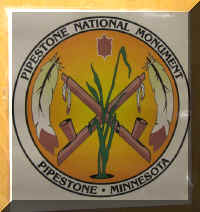
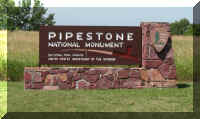 Within this park are the pipestone quarries where the red stone used by
American Indians to make ceremonial pipes is found. Stone pipes were used by the Indians of North America. This location came to be the preferred
source of pipe stone among the Plains tribes.
Within this park are the pipestone quarries where the red stone used by
American Indians to make ceremonial pipes is found. Stone pipes were used by the Indians of North America. This location came to be the preferred
source of pipe stone among the Plains tribes.
Only Native Americans are allowed to quarry pipe stone.
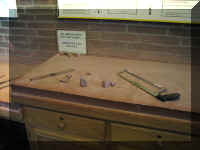 On display were pieces of pipestone for visitors to try their hand at
carving. The stone is soft, easily worked with hand tools. Fred and I both tried our
hand at marking up the samples.
On display were pieces of pipestone for visitors to try their hand at
carving. The stone is soft, easily worked with hand tools. Fred and I both tried our
hand at marking up the samples.
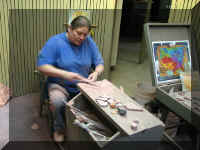 Two
artisans were working while we were there.
Two
artisans were working while we were there.
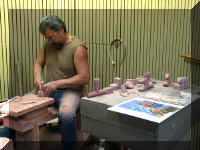
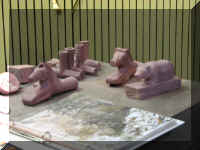
Pipe bowls of all shapes and sizes
were on display.
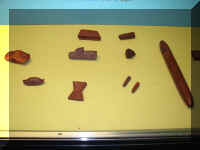
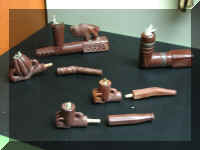
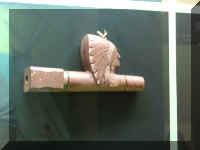
The pipe stone was also used to make tobacco cutting stones and pipe stokers.
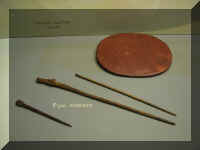
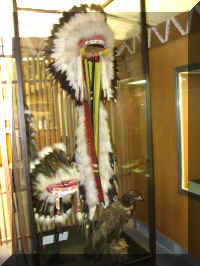
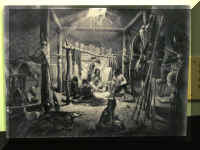 The ceremonial pipe, common to the upper mid-west Native Americans, was used
in all ceremonies.
The ceremonial pipe, common to the upper mid-west Native Americans, was used
in all ceremonies.
< This picture is of the inside of a Mandan Hut.
The pipe has great significance along with the ceremonial headdress.
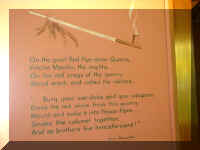
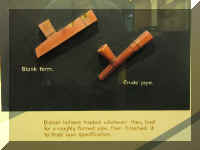 It
was interesting that pipe bowls were purchased by other Native American tribes in
rough condition. They would then finished the pipe bowl with designs and
symbols of their own choosing.
It
was interesting that pipe bowls were purchased by other Native American tribes in
rough condition. They would then finished the pipe bowl with designs and
symbols of their own choosing.
These petroglyphs found in the park were displayed in the visitors center.
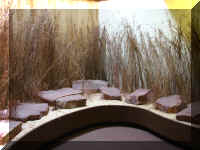
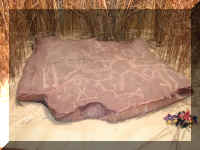
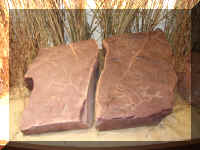
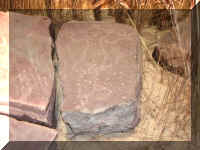
This image of a pipe was said to have been found naturally in a quarry.
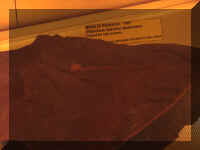
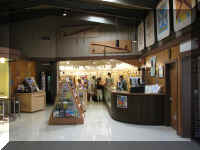
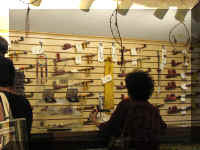 The
gift shop had a big selection of items including finished pipes.
The
gift shop had a big selection of items including finished pipes.
Some pipes were very
expensive.
A 3/4 mile self-guided walking trail began and ended at the visitors
center. Points of interest were numbered and discussed in a guide book. You
could purchase your own guide book or use one and return it at the end of the
tour.
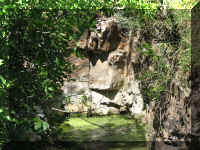 This is called the Spotted Pipestone Quarry because the pipestone rock
in this quarry has
spots on it. The is an active quarry. Most of the mining is done in the fall,
when the weather is cooler and the water has evaporated.
This is called the Spotted Pipestone Quarry because the pipestone rock
in this quarry has
spots on it. The is an active quarry. Most of the mining is done in the fall,
when the weather is cooler and the water has evaporated.
Lake Hiawatha . . .
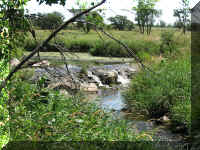
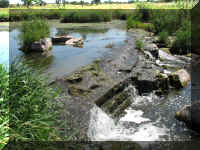
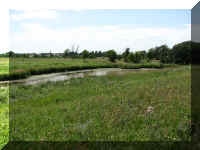
Old Stone face . . .
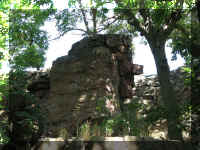
This marker commemorates the Nicollet expedition of 1838. If you look closely, the
second
photograph shows the initials of the expedition members carved into the stone.
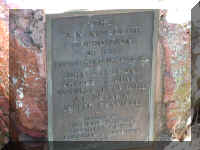
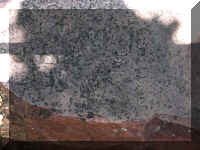
The names of later settlers were also at this location.
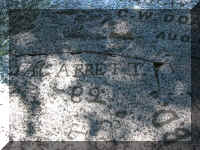
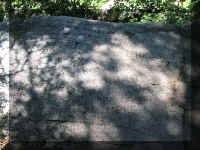
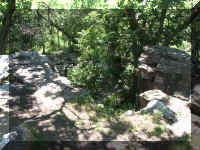 Warriors are said to
have used Leaping Rock to prove their bravery. They
would jump from the rock on the left to the one on the right and plant an arrow
in a crack in the rock.
Warriors are said to
have used Leaping Rock to prove their bravery. They
would jump from the rock on the left to the one on the right and plant an arrow
in a crack in the rock.
The Winnewissa Falls is a highlight of the walking trail.
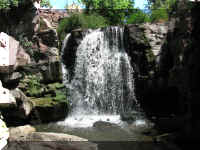
The face of the Oracle was difficult to find. This man standing on the rocks
looking for it should have read the sign. The sign offered a little help.
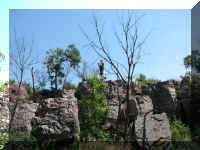
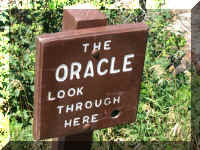
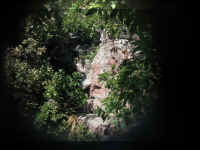
Legend says that from this rock formation, came messages from the Great
Spirit.
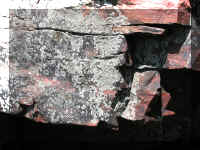 The guide book explained in detail how lichens growing on this rock prepared
the rock for other forms of vegetation to grow.
The guide book explained in detail how lichens growing on this rock prepared
the rock for other forms of vegetation to grow.
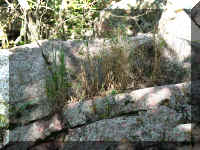
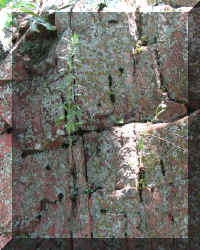
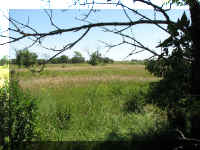 The trail lead us through a
tall grass prairie.
The trail lead us through a
tall grass prairie.
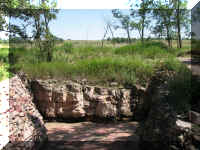 This
'retired' pipestone quarry shows how far below the surface the pipestone is
found. The pipestone is at the bottom of the rock wall.
This
'retired' pipestone quarry shows how far below the surface the pipestone is
found. The pipestone is at the bottom of the rock wall.
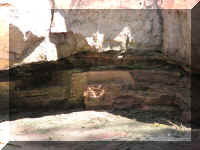
As we were leaving Pipestone National Monument, we stopped to visit the Three Maidens.
With smaller fragments, they once formed one large single boulder some 50 feet
in diameter. The boulder was deposited by glaciers. There are various legends
regarding The Three Maidens, a popular Pipestone landmark.
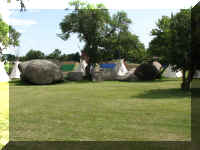
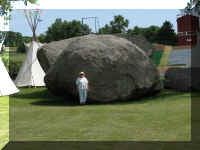
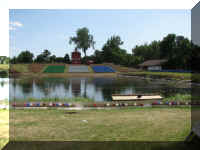 The weekend we were at Pipestone was the last performance of
The Song of Hiawatha Pageant. After a
60 year run, the pageant was closing its doors.
The weekend we were at Pipestone was the last performance of
The Song of Hiawatha Pageant. After a
60 year run, the pageant was closing its doors.
The admission to Pipestone National Monument was $3 per person or $5 per
family.
GO
BACK TO > > > Pacific Northwest - 2008
Top of Page


 Within this park are the pipestone quarries where the red stone used by
American Indians to make ceremonial pipes is found. Stone pipes were used by the Indians of North America. This location came to be the preferred
source of pipe stone among the Plains tribes.
Within this park are the pipestone quarries where the red stone used by
American Indians to make ceremonial pipes is found. Stone pipes were used by the Indians of North America. This location came to be the preferred
source of pipe stone among the Plains tribes. 








































